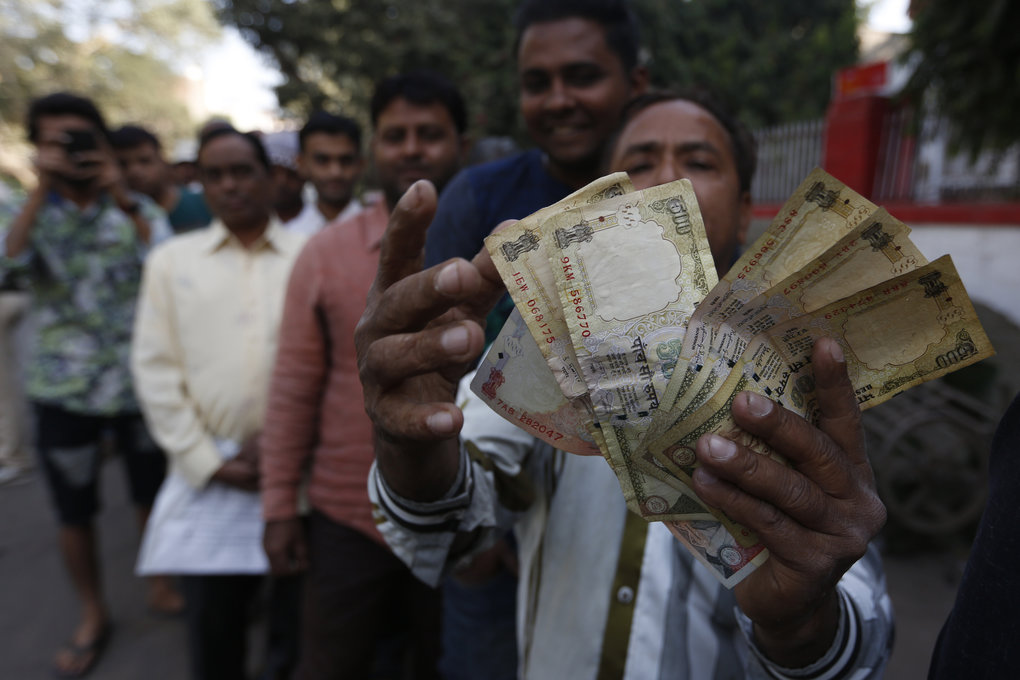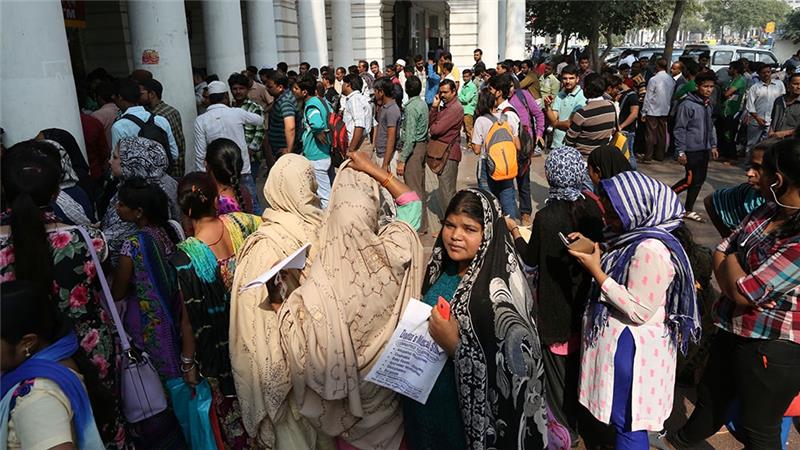Ajit Solanki/AP
By
Siddhartha Rastogi
Cash withdrawal curbs to continue…
On 8th November 2016, India took a decisive step to fight corruption and black money. For the third time in the history of India and the second time in Independent India, demonetisation was implemented banning legal tenders of INR 1000 (~14.92 USD) and INR 500(~7.46 USD) which constituted 86% of the total currency in circulation.
This was in line with Right wing BJP government’s promise to crackdown on illicit money in the system which was used to fund terror activities, leading to a surge in naxalite operations and the inflation of immovable asset prices making large number of businesses unviable due to prohibitory real estate costs. This illicit money has also been used by Indian politicians for years to swing voters during elections by distributing physical currency.
The Indian government had adopted a slew of measures since they came into power in May 2014. Using the banking platform to pay for subsidies, opening ~200 million zero balance bank accounts enabling the inclusion of underprivileged in formal economy, filing and disclosure of global assets and income for all resident Indians, bringing black money in legit economy by paying 45% tax, crackdown on Benami (anonymous) transactions and properties being some of them.
Until 8th November this year, as per the Reserve Bank of India’s (Indian Banking regulator) records, 18 lakh Crores (~269 BN USD) worth of notes were in circulation. On the night of 8th Nov 2016, 15.44 lakh Crores worth of notes went out of legal tenders. To replenish the demand for legal tenders INR 2000 (~29.85USD) notes were introduced. Rumors exist that this can be a temporary measure and eventually INR 2000 legal tenders will also be phased out.
Additionally, banks were restrained to give the new currency freely. An INR 4000 limit was set for exchanging currency which was later withdrawn. Restrictions were set by the government on withdrawals exceeding INR 24000 (~358 USD) per week and INR 2500 (~37 USD) per day from ATMs.
Upto December 19th 2016, 5.92 lack crores have been replenished in the banking system. In other words only 38% of the total currency which has been taken out of the system has been brought back through new legal tenders. The government announced the date of 30th Dec 2016 by which the demonetisation process would be over.
Queuing to withdraw cash in India – Photo/Showkat Shafi
Does this mean that post 30th Dec 2016, people of India can withdraw their money from the banks and ATMs freely?
Before I deal with the above question, let me run through the legality of this process. The Supreme Court of India (apex body) on 15th November 2016 ruled out any stay on banning the demonetisation process stating that people can use other means to access their money freely with no restrictions.
Coming back to the question –
The total capacity for India to print currency is 23 billion notes per year (including INR 10, 20,50, 100, 500,1000,2000). 22 billion notes of INR 500 and INR 1000 went out of circulation; hence it’s practically impossible to bring entirely new legal tenders by 30th December 2016 (60 -90 days).
The greater challenge is the government’s reluctance to bring more physical currency into the economy. The government is of the opinion that a large number of tax evaders exist in India because of the cash dealings and hence does not want to keep a free supply of physical currency.
Only 48 million individuals were tax assessed, in the assessment year 2014-15, or 3.81 percent of India’s population.
India’s tax to GDP ratio stands at 16.6 per cent, which is much lower than the emerging market economy average of 21 per cent and OECD average of 34 per cent.
The physical movement of cash doesn’t leave a trail and cannot be tracked for tax evasion or any other illegal or anti social activity, hence the government will not allow legal tenders of over INR 10 Lac Crores to come back into the economy. The Indian economy therefore has to learn to function with 56% of the total physical currency which will be the new norm.
If 46% of the total currency will not come back into the economy, there is no way individuals in India would be allowed to remove cash freely from the banking system or withdraw it from the ATMs.
The most cashless societies of the world are in Belgium, France, and Canada where over 90% of consumer payments are made via cashless modes. India, which uses cash for 78% of the transactions, will have to adapt to the digital world if it wishes to maintain the status of the Fastest Growing Economy in the World.




No Comments Yet!
You can be first to comment this post!